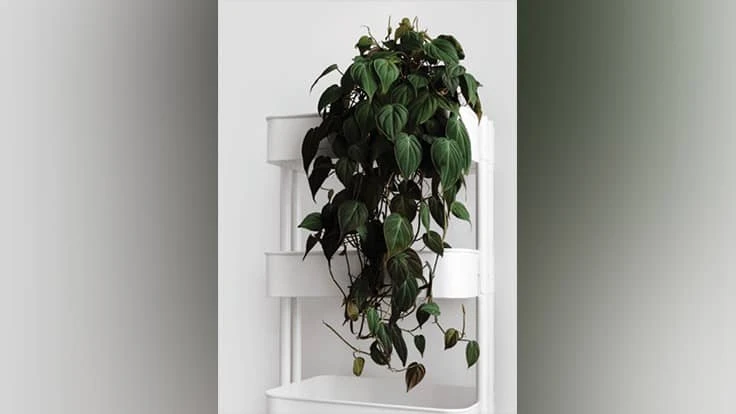

Chances are, if you grow tropicals and succulents, your houseplant sales have grown exponentially. New gardening and plant enthusiasts have an ever-increasing appetite for indoor foliage. Many wholesale plant growers are now going direct to consumer with retail sales to capitalize on the demand. We in the industry are constantly chasing after the next new hot houseplant trend to put into production. On the other hand, what our houseplant customers may really be chasing after is light.
I have a very dark house, as do many houseplant customers. I only have a few windows that provide adequate light for basic plants. Even then, I still must use grow lights to provide supplemental light — especially for any plants that don’t fall into the low-light category. Many apartment-dwellers find themselves in the same situation. Hence, I have grow lights of all different types all over my house. But I happen to be a professional horticulturist who is also an expert on grow lighting. This is obviously not the case for most of our houseplant customers.
Sure, more dedicated indoor gardeners and plant addicts will eventually invest in grow lighting to maintain their burgeoning plant collections. Even newbies who have finally accepted that their precious fiddle leaf fig may never get enough natural light in their homes are graduating to grow lights. Especially since there are so many new simple and effective grow light options to choose from these days.
But artificial plant light is generally not where most customers start. Cost for grow lighting may also be a prohibitive factor for many new young plant customers.
Most houseplant keepers, especially beginners, will be most successful with low-light houseplants, which is pretty much the reason you see the same 10 old-school plants on just about every online plant shop’s site: sansevieria, dracaena, chlorophytum, philodendron, syngonium, calathea, monstera and the like. Frankly, there’s not much to inspire or differentiate between all these online plant shops.
But it’s totally understandable why they are offering a limited and boring selection; these are the easiest houseplant options that tolerate low light. Easy is what all these new plant parents require. That said, their redundancy opens an opportunity for growers and retailers willing to shake things up a bit.
Stand out
If you’re looking to boost and differentiate your houseplant sales, but don’t want to sacrifice on volume, the trick is to combine unique form with low-light tolerance. I’d love to see a bigger, better selection and variety of low-light plant options available, both in garden centers and online. I know plant shoppers do too.
When it comes to what’s popular with houseplant shoppers, interesting foliage shape and color reigns. Think variegation or unusual foliage color and interesting leaf shape and texture.
Think fun and funky
There are of course some cool new, or newish, varieties on the market to capture the low-light houseplant lover’s fancy. Begonia ‘Ruby Red’ tricks many hobbyists into thinking it’s some new sort of Pilea peperomioides, or a peperomia. The distinctive red dot in the middle of its glossy round leaves makes ‘Ruby Red’ quite desirable. Seersucker plant, Geogenanthus poeppigii, has funky crinkled foliage that will no doubt intrigue even experienced plant keepers. Jewel orchids seem poised for a houseplant reboot and the blooms are a low-light bonus.
Old-school with a twist
When it comes to the old standards such as sansevieria or philodendron, consider offering more unusual species or varieties of the common genus. Customers will still get all the low-light easy-care benefits these species have to offer, but they’ll feel like they are getting something more unusual. Philodendron brandtianum sports silvery foliage patterns. Velvet leaf philodendron, Philodendron micans, shimmers with iridescent foliage. Sansevieria ‘Samurai’ is a tiny specimen with rose-gold leaf margins. Syngonium macrophyllum boasts unusual velvety looking leaves. Haworthia venosa is just as easy to grow and low-light tolerant as more common haworthias, but the striking foliage pattern will turn heads. For a fun twist on pothos Epipremnum pinnatum ‘Cebu Blue’ offers luscious blue/silver foliage. These are just some examples of how you can differentiate within an easy-care low-light genus.
Risky business
There are many wonderful low-light plants, such as ferns, that are not always the easiest types of plants for indoor plant keepers to master. Personally, I feel ferns are ready for a renaissance as houseplants, but we’re going to need to offer species that can thrive on the drier side.
Most plant keepers I engage with admit to struggling with ferns beyond the basic bird’s nest and the like. And even us pros know we can kill a maidenhair fern indoors in about five minutes flat. Yet, many online retailers and blogs keep pushing such high-humidity ferns to beginner plant keepers.
Unless grown under glass with extra humidity, many ferns (and selaginellas) will make for frustrating houseplant failures for most beginners. The solution may be to rebrand certain temperate ferns that tolerate drier conditions, such as Japanese painted fern, as houseplants. Why not?
My point here is that it’s not necessarily one particular “hot” new plant that is going to be the answer to growing your foliage sales. It’s the light category they fall into.
By blending interesting form and foliage with low-light tolerance, you can grow your margins and future foliage demand.

Explore the December 2019 Issue
Check out more from this issue and find your next story to read.
Latest from Greenhouse Management
- Anthura acquires Bromelia assets from Corn. Bak in Netherlands
- Top 10 stories for National Poinsettia Day
- Langendoen Mechanical hosts open house to showcase new greenhouse build
- Conor Foy joins EHR's national sales team
- Pantone announces its 2026 Color of the Year
- Syngenta granted federal registration for Trefinti nematicide/fungicide in ornamental market
- A legacy of influence
- HILA 2025 video highlights: John Gaydos of Proven Winners





